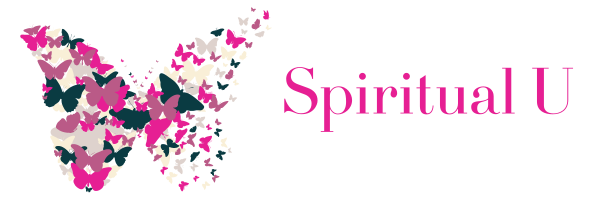How to cultivate an attitude of gratitude for the new year
Have you ever heard of the phrase "attitude of gratitude?"
Most of us have high hopes for the new year! Whether you have a new goal to strive for or to get back to your normal life after the pandemic, a gratitude practice is a gateway to the abundance you are looking for. When cultivating an attitude of gratitude and developing a habit to express gratitude, these tips will help.
Unlike shadow work and releasing limiting beliefs, creating an attitude of gratitude is easier for most. Through these simple tips and consistent efforts, you will be on your way to developing an attitude of gratitude for an abundant new year!
What is the meaning of gratitude?
The Oxford dictionary definition of gratitude is "the quality of being thankful; readiness to show appreciation for and to return kindness."
What does it mean to return kindness? When we focus so much on lack, it is the kind thing to acknowledge what is already there. When we cultivate an attitude of gratitude, we return kindness to ourselves and others. Refocusing our brains on the people we value in our lives, the traits we love about ourselves, and the privileges we have been lucky enough to have.
This should not take away from what we are still missing and the abundance we wish to attract. We should still strive for our dreams of doing, being, and receiving better things for us and those we love. Luckily, we are complex beings capable of both aspirations and gratitude. In fact, the two together are vital on your path to manifesting abundance.
Until we can acknowledge the good things in our lives and know that we are worthy of those blessings, we will not receive the abundance we are hoping for.
Albert Einstein once said, "Everything is energy, and that's all there is to it. Match the frequency of the reality you want, and you cannot help but get that reality. It can be no other way. This is not philosophy. This is physics."
This is a great way to understand the law of attraction. And a vital component of that frequency is gratitude. So, to reach the point in our lives that we feel fulfilled, we must find gratitude in the now.
Gratitude For Mental Health
Many people regularly find themselves experiencing more stress and sadness during the holidays. The winter months are the most common season for episodes of depression. Combine that with the living hell that the world has been through in the last two years. It's no wonder why many mental health services are booked up.
We can all relate to low periods in our lives to which we have felt hopeless and depressed. If you imagine your joy as a ship and your low periods as fog. Your ship can't navigate through the fog very easily. The fog makes it more challenging to do any task, and your ship can't return to shore.
During these times, our brain is not getting the same amount of happy chemicals that it used to. Sometimes we can become lost in the fog and need major interventions, but one tool that can help you on your journey back to land is a gratitude practice.
Studies have shown that when we feel grateful and practice gratitude regularly, our brain begins to send us more of the happy chemicals—acting as a lighthouse in the distance to follow.
How to practice gratitude during the holidays
The holidays are a busy time and can be generally stressful. Here are some simple tips to help you create a gratitude practice during the holidays that won't take you long each day. Remember, consistency is key!
1.) Attitude of Gratitude meditation: To most people, beginning a meditation practice seems like quite the undertaking. Starting with a morning gratitude meditation can set you up for a more positive day.
If you are not a morning person, then evening gratitude-guided meditation could be just the support you need to drift off on a happy night's sleep. This is especially good for those who lay in bed awake thinking for a long time. You can find my guided meditations here. Starting with a 5-minute gratitude meditation each day can start you on a brighter and more exciting path.
2.) Daily gratitude journaling: If you wake up each day and write down 3-5 things you are grateful for, this will set the tone for a more positive and grateful day. The process of writing your thoughts and feelings down in a journal allows for them to get out of your mind and take on a life of their own.
This can be an exceptional tool for out of sight out of mind people. And on those days when you are not feeling grateful, you have your journal to reference. You can look at all your blessings and sit with the feeling of gratitude you felt when you wrote them. This may help you get out of a negative funk or difficult time.
3.) Say it out loud: When you feel grateful for something or someone, say it out loud! For some people, this may be the hardest part. Saying "I love you" to someone is not the same as saying, "I and grateful to have you in my life." To tell someone you love them is relatively common practice for many people. The added effort of expressing gratitude by telling them you are grateful for them opens up to a more vulnerable place.
As you can see, gratitude is not like going around the table at thanksgiving and blurting out the first thing that comes to mind. It is a mental practice that can be a powerful tool in your spiritual and mental health. Until you fully appreciate what you have, you cannot fully manifest everything you deserve and desire.





